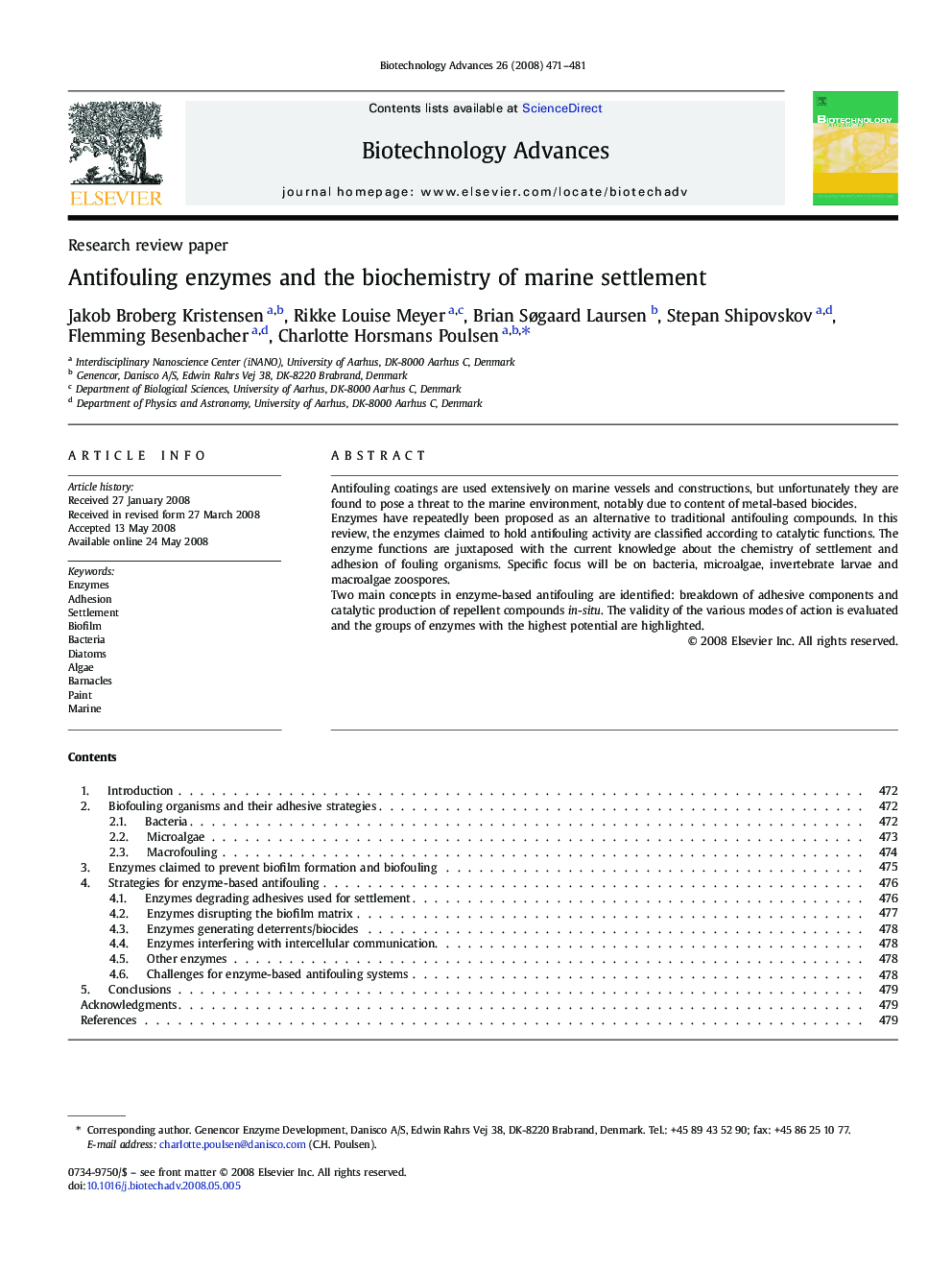| Article ID | Journal | Published Year | Pages | File Type |
|---|---|---|---|---|
| 14779 | Biotechnology Advances | 2008 | 11 Pages |
Antifouling coatings are used extensively on marine vessels and constructions, but unfortunately they are found to pose a threat to the marine environment, notably due to content of metal-based biocides.Enzymes have repeatedly been proposed as an alternative to traditional antifouling compounds. In this review, the enzymes claimed to hold antifouling activity are classified according to catalytic functions. The enzyme functions are juxtaposed with the current knowledge about the chemistry of settlement and adhesion of fouling organisms. Specific focus will be on bacteria, microalgae, invertebrate larvae and macroalgae zoospores.Two main concepts in enzyme-based antifouling are identified: breakdown of adhesive components and catalytic production of repellent compounds in-situ. The validity of the various modes of action is evaluated and the groups of enzymes with the highest potential are highlighted.
